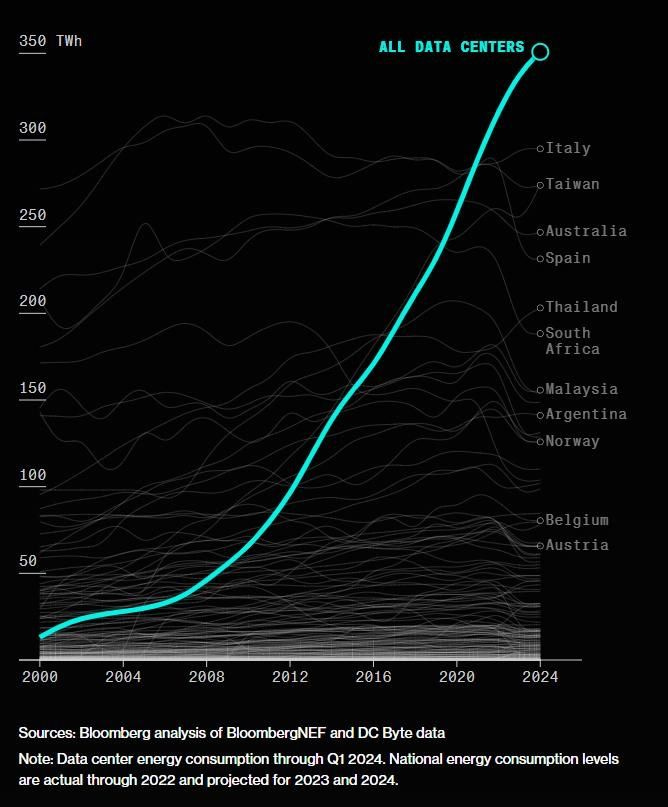A Least-Cost Energy Strategy Sounds Boring. Or Wonky. But It Could Be All of Everything.
Getting climate change under control is about safety, health, ecosystems, justice, and so much more. But the quickest route to the heart of the matter may still be through our pocketbooks.
What if the surest winning argument for a decarbonized energy system is the one that no credible conservative could ever dismiss?
If you could work around and under the wacky denial and distraction on the reality of climate change and the wacko conspiracy theories about 15-minute cities by making a simple, foolproof case for the most affordable, least-cost energy system possible?
And what if you found out that those facts and arguments have been hiding in plain sight for decades, getting better by the day as the cost of renewable energy plummets?
I’ve been interested in a least-cost energy strategy as a possible winning narrative for climate and energy solutions for at least a decade. But the train of thought traces back to 1979, when physicist and economist Vince Taylor introduced it in the Easy Path Energy Plan he developed for the Cambridge, Massachusetts-based Union of Concerned Scientists.
At the time, no one but Exxon knew we were up against a global climate crisis, but the United States was still scrambling to shift its energy system after a devastating oil embargo imposed by the Organization for Petroleum Exporting Countries (OPEC). Five years into that response, Taylor reported that energy efficiency measures in the U.S. had “contributed more than 2½ times as much to the present availability of energy services” as the combined weight of nuclear power expansions and oil imports.
He wrote that the “general rule” of his Easy Path Energy Strategy was:
…to turn away from expensive, dangerous, and ineffective supply expansion projects toward cheaper, safer, and more effective measures to raise the efficiency with which energy resources are used. Ninety percent or more of the solution to our energy problems will come from improvements in energy efficiency; 10% or less from supply expansion. Yet the administrative and budgetary resources of the [U.S.] Department of Energy are being allocated in just the opposite proportions.
Fast forward to today, and those proportions may have shifted, but Taylor’s overall argument stands the test of time. Because, while what we now think of as energy decarbonization technologies have advanced by leaps and bounds, we’re still just scratching the surface on using those least-cost systems as widely and efficiently as possible.
Build, Baby, Build
In the months ahead, a new round of decisions on how to deliver energy services—the heating and cooling, lighting and connectivity that we all depend on—will determine how quickly and fully we can get the climate pollution out of the system. In general, the right answer begins with maximizing the energy efficiency of everything—replacing methane-intensive gas heating and inefficient electric baseboards with heat pumps, favouring electrified transit over private vehicles—while we simultaneously decarbonize the grid.
The wrong choices will severely undercut our efforts to reduce greenhouse gas emissions and get climate change under control. And the latest examples shine a light on how expensive those wrong choices could be.
• In Ottawa late last month, the local distribution utility called for “massive investment” to meet rising electricity demand. “The level of capital to support the electrification plans we have in place is going to exceed anything we’ve ever seen before,” Hydro Ottawa President and CEO Bryce Conrad told City Council late last month.
• In Manitoba, the provincial utility warned that it faces “accelerated system performance degradation and diminished supply” unless it spends hundreds of millions of dollars per year to clear a looming infrastructure deficit. A recent asset management report called for annual investments of $700 million when Manitoba Hydro is already $24.6 billion in debt, in a province with a total population of just under 1.5 million.
Some large share of those investments will indeed be necessary, whether or not the grid decarbonizes. But that reality makes it more important, not less, to make every decision carefully and deliberately.
“Hydro Ottawa is right to plan for a rapid increase in demand, and they’re opening an urgent public conversation about where the power will come from and how we’ll pay for it,” said Steve Winkelman, executive director of the Ottawa Climate Action Fund (OCAF), in a release responding to Conrad’s council appearance. “When you’re looking ahead to a big investment, it’s that much more important to stretch every dollar as far as you can.”
[Disclosure: Alongside my work on The Energy Mix and The Weekender, I recently signed on as a part-time strategic advisor with OCAF, and in that capacity I drafted the media release that I’ve just quoted back at you.]
The two news stories from Ottawa and Manitoba point to an essential reality in the transition off carbon: The accelerating shift from fossil fuels to electricity makes it all the more important to minimize demand, first and foremost, then pick the least-cost and lowest-carbon options for the new supplies we still need.
• When a provincial power grid turns to energy efficiency and heat pumps to reduce demand, it curtails the need for expensive, new gas plants and transmission lines—leaving dollars available to get utility-scale renewables onto the system. Along the way, preventing new gas plants and shutting down existing ones is one of the necessary steps to decarbonize the system.
• By maximizing efficiency and meeting more of the remaining demand with distributed energy resources, demand response, and gradual uptake of virtual power plants, a distribution utility like Hydro Ottawa can stabilize local electricity costs, build better resilience against the next grid outage, and keep more of our energy dollars in the community.
At both levels, more often than not, a least-cost energy strategy guides us to the most practical and the lowest-carbon choice. It also gets us closer to territory where we can make a convincing case for a decarbonized energy system, outside the still-too-small “bubble” of people whose first concern is about climate change and climate solutions.
A Winning Argument
With renewable energy and energy storage projects facing a surge of local objections, often fuelled by deliberate mis- and disinformation, the economic case isn’t the only argument proponents need. But it’s an essential piece of the puzzle.
In the midst of a sustained affordability crisis, with a million or more Canadian households in energy poverty, the promise of lower, more predictable energy bills can be a lot more concrete and compelling than warning about the future impacts of climate change. Even when we know those impacts are right around the corner, and carry a massive economic cost in their own right.
The cost savings fall into four main categories:
• Energy efficiency is still the starting point because the cheapest unit of energy is the one you never have to generate, transmit, consume, or pay for. The most ambitious deep energy retrofits cost more than the dollars they save for individual consumers—but that’s before factoring in the dollar savings and climate benefits across the system as a whole.
• Heat pumps drastically reduce building energy costs because they operate so much more efficiently than any other form of heating or cooling.
• Grid-scale wind and solar with energy storage are already less expensive than new gas plants, a Clean Energy Canada study concluded last year, with the price of the renewable options expected to fall another 40% by 2035.
• Utilities are still coming to grips with distributed energy resources and demand response as an affordable alternative to new, centralized supply. So it had no immediate impact on provincial power planning in 2022 when Dunsky Energy + Climate Advisors determined that Ontario could clear a looming electricity shortage with local resources like solar, small hydro, and energy storage, with no need to build new gas plants or extend the operating life of an aging nuclear station outside Toronto.
Let’s Get This Done
One of the biggest obstacles to a rapid shift in approach is that grid planners are often very cautious about trying new things—and we shouldn’t be too quick to object to that. Anyone I’ve ever talked in the utility sector shares a baked-in understanding that reliability is their prime directive, and unless we’re okay with having the grid crash now and again, we want them thinking that way.
But front-line experience shows that grids can stay reliable as they decarbonize. The cost figures make sense from the ground up. And we’ve often seen that decisions on how much, how fast to decarbonize are equal parts technical and political.
Which points back to two simple, polite questions that we suggested on The Weekender last month, questions that any climate or local affordability hawk should be prepared to ask any candidate, of any political persuasion, when the federal election rolls around next year:
1. YES OR NO: If we all agree that we need to get carbon emissions under control, should governments prioritize the quickest, cheapest ways to get there?
2. YES OR NO: If private industry has another plan, that’s okay—that’s why we call them private. But should taxpayers foot the bill, or let them run roughshod and unregulated if we’re going to be left to clean up the environmental and social impacts?
The line of thinking in Vince Taylor’s Easy Path Energy Plan is decades old. But it’s reinforced by changes in systems and technologies that were unimaginable four decades ago—just as the climate crisis has brought a level of urgency that no one but Exxon could have anticipated at the time. Those realities leave us with a pressing need and an immediate opportunity to pick up the pace, and the economic arguments can help make the case.
Mitchell Beer traces his background in renewable energy and energy efficiency back to 1977, in climate change to 1997. Now he and the rest of the Energy Mix team scan 1,200 news headlines a week to pull together The Energy Mix, The Energy Mix Weekender, and our weekly feature digests, Cities & Communities and Heat & Power.
Chart of the Week

‘Tsunami’ Engulfs Alberta Renewables as Provincial Moratorium Unsettles Sector
Edmonton Revamps 15-Minute Cities Plan Amid Public Distrust, Industry Pushback
Hydro Ottawa Calls for ‘Massive’ Infrastructure Spending to Meet Rising Power Demand
Oil Worker’s Shift to Geothermal Reflects ‘Endless’ Opportunity in Clean Careers
$9B, 3,000-MW Wind Farm for Saguenay Region as Hydro-Québec Unveils New Partnerships
Big Solar Outshines Big Oil as Emerging Giants Top ‘Powerhouses of Petroleum’
U.S. Energy Storage Market Shows 84% Growth in Q1 Capacity
‘Performance Degradation, Diminished Supply’ Have Manitoba Planning Massive Grid Overhaul
New Retrofit Loan Facility Delivers Local Energy Savings for Multi-Residential Housing
Enbridge Gas is ‘fighting for its survival’ — and that means keeping Ontario on fossil fuels (The Narwhal)
Competition Bureau to speed development of guidance on new greenwashing rules (The Canadian Press)
Suncor oil sands site shut because of nearby wildfire, Alberta minister says (Reuters)
Parliament grilled Canada's Big Five banks on their fossil fuel financing - here's why it matters (Corporate Knights)
B.C. hereditary chief gets house arrest for pipeline blockade (Canadian Broadcasting Corporation)
How BC’s oil and gas industry sidestepped carbon pricing (Policy Note)
Corporate lobbyists eye new lawsuits after U.S. Supreme Court limits federal power (Washington Post)
Germany's coalition agrees 2025 budget with ‘record’ climate and energy investments (Clean Energy Wire)
U.S. regulators approve Louisiana LNG project over climate objections (Reuters)
Louisiana Gas Plant Builds Seawall on Sinking Land (Washington Post)
India is likely undercounting heat deaths, affecting its response to increasingly harsh heat waves (The Associated Press)
Brazil's Amazon rainforest sees worst 6 months of wildfires in 20 years, data shows (France24)







